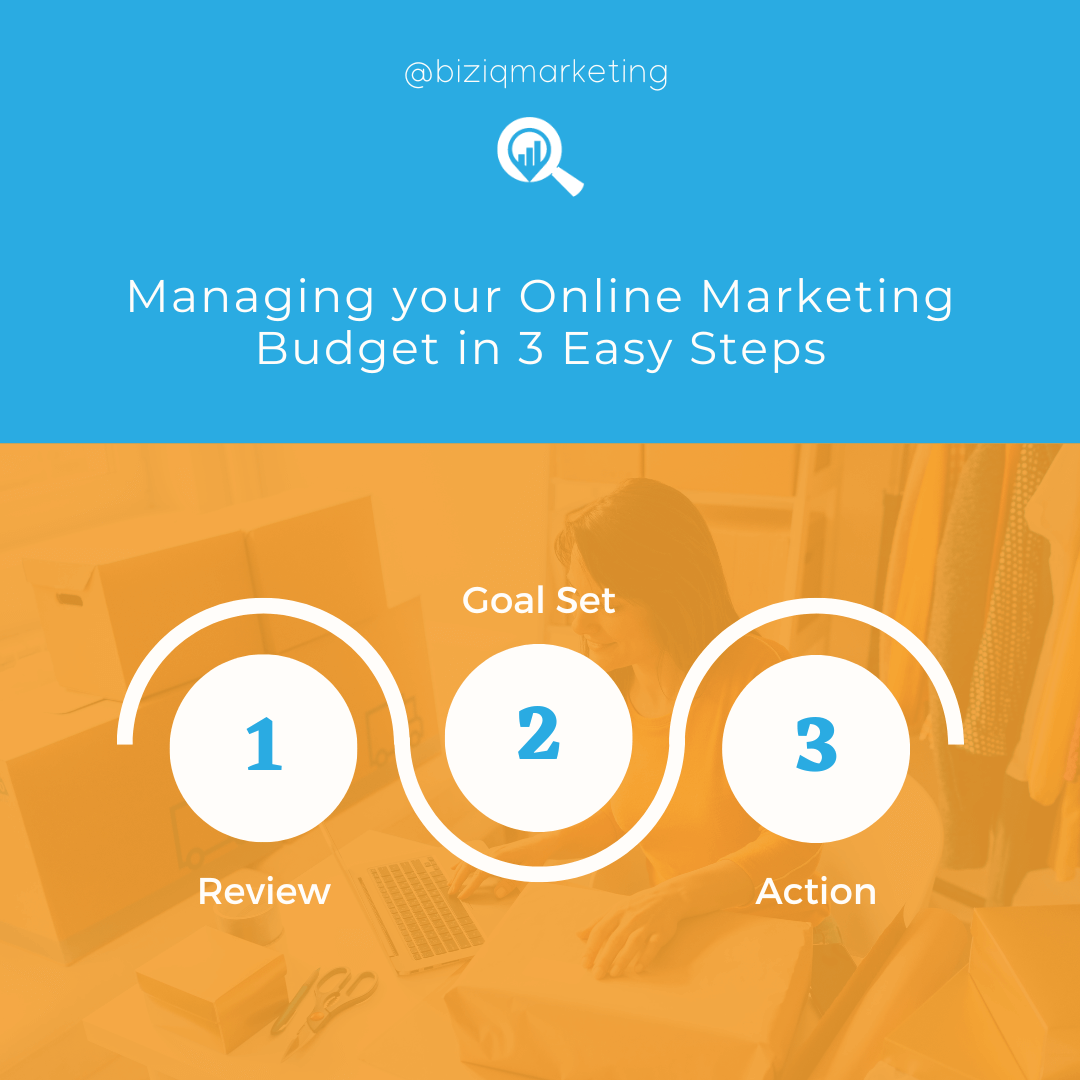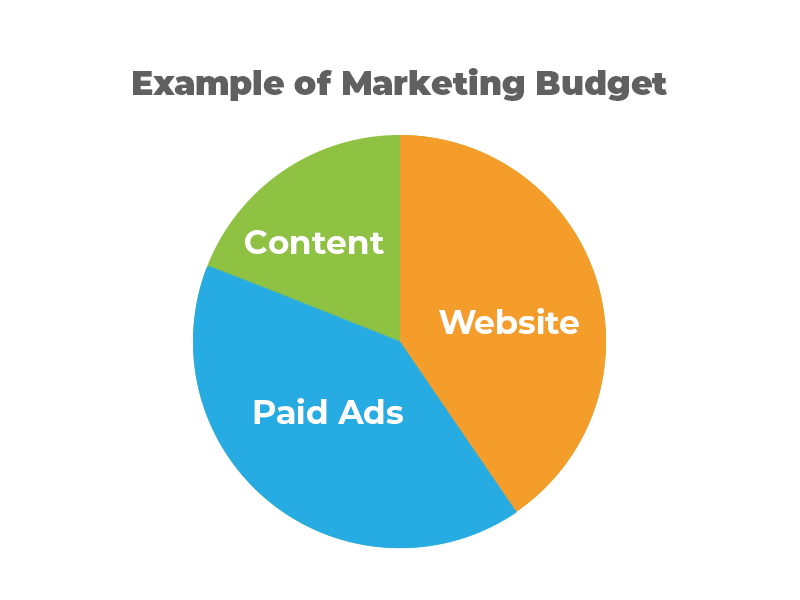Another year is coming to an end, so it is time to consider next year’s marketing budget. You are probably asking yourself, “How much should I spend on marketing in 2024?” To find an answer to this tricky and somewhat complicated question, continue on for some valuable tips.

What Your Marketing Plan Should Focus On?
When creating a marketing plan for 2024, here are the things you should focus on:
- To increase customer lifetime value, you need to transform one-time buyers into loyal and permanent customers. One repeat customer equals five new customers, costing five times more than retaining an existing customer. Many useful tactics will help you increase your customer lifetime value. They include the use of loyalty programs, increasing pricing, implementing a dunning management system, and more.
- Interactive and intelligent content. Your content should always remain one of your main focuses. You should focus on creating more thoughtful content, which means personalized content that provides value for potential and current customers.
- Promotional plan and metrics. Your promotional plan should include various marketing activities, including direct sales, public relations, various forms of advertising, internet marketing, and sales promotions. You should also think about how much money you are ready to spend on each of these activities.
- Your pricing strategy. You need to decide how much you will charge and why you are setting these prices because your pricing information will determine the choice of your marketing activities in the future. You should understand that keeping your costs lower than your competitors is essential.
What is the Average Marketing Budget for a Small Business?
Your revenue should determine the marketing budget for your small business. On average, here is a general rule of thumb for small businesses:
- To maintain your existing sales, you should spend up to 5% to 7% of your total revenue.
- If your goal is to grow your business and be competitive, you should spend up to 7% to 10% of your total revenue.
- If you want to dominate and be more aggressive in the market, you should spend up to 10% to 15% of the total revenue.
However, it is crucial to keep in mind that this rule of thumb is relevant to your competitors’ marketing expenses as well. For example, if you are spending 10% of $200,000 revenue and your competitor is spending 10% of their $1 million revenue, you will not be dominating.
What’s a Typical Marketing Budget Percentage of Revenue?
As mentioned above, a typical marketing budget percentage is between 5% and 15% of your revenue, depending on your marketing goal and the revenue of your competitors.
Marketing Budget Percentage by Industry
Let’s look at marketing spending as a percent of company revenues by industry:
- Banking, finance, and insurance: 4.3%
- Communications and media: 11%
- Customer services: 13.9%
- Consumer packaged goods: 10%
- Education: 4.6%
- Energy: 0.5%
- Manufacturing: 2.7%
- Healthcare: 10.2%
- Mining and construction: 0.6%
- Retail and wholesale: 11.6%
- Service consulting: 6.2%
- Technology, software, biotechnology: 12.2%
- Transportation: 11.2%

How to Manage Your Online Marketing Budget
Managing your marketing budget properly is essential, and here are several steps that will help you do it more effectively:
- Set your annual goal. Setting a goal will help you decide what metrics to use and what are your current priorities. You should analyze the current trends and compare your spending to the spending of your main competitors.
- Create subcategories. You should break down budget items to have more insight and understanding into how you use your money for marketing. It will help you see how to allocate more funds and resources. For example, you can break down the category “advertising” that includes multiple other subcategories.
- Analyze the budget of your previous years. When you analyze the data from your previous years, you can understand better what areas should be changed. This will help you see what parts of your budget need improvement and what strategies you should use to spend your money more efficiently. When you review the budgets from previous years, you can also set up more realistic goals for 2024.
- Let yourself remain flexible. You can easily shift your budget priorities throughout the upcoming year if you stay flexible. Flexibility is critical because it allows you to respond efficiently to changes and notice new opportunities.

FAQs About Marketing Budgets
Here are the answers to the most common questions about creating and managing a marketing budget:
What is a marketing budget?
Why is a marketing budget so important?
What is a decent marketing budget?
BizIQ – Professional Help with Your Marketing Goals and Budget
If you need help creating and managing your marketing budget in 2024 to achieve better results and help your business grow, BizIQ is ready to help you. We have already helped over 26.000 businesses in the United States, and we will be happy to help yours as well. If you have any questions, feel free to visit our website or call us.
Another year is coming to an end, so it is time to consider next year’s marketing budget. You are probably asking yourself, “How much should I spend on marketing in 2024?” To find an answer to this tricky and somewhat complicated question, continue on for some valuable tips.

What Your Marketing Plan Should Focus On?
When creating a marketing plan for 2024, here are the things you should focus on:
- To increase customer lifetime value, you need to transform one-time buyers into loyal and permanent customers. One repeat customer equals five new customers, costing five times more than retaining an existing customer. Many useful tactics will help you increase your customer lifetime value. They include the use of loyalty programs, increasing pricing, implementing a dunning management system, and more.
- Interactive and intelligent content. Your content should always remain one of your main focuses. You should focus on creating more thoughtful content, which means personalized content that provides value for potential and current customers.
- Promotional plan and metrics. Your promotional plan should include various marketing activities, including direct sales, public relations, various forms of advertising, internet marketing, and sales promotions. You should also think about how much money you are ready to spend on each of these activities.
- Your pricing strategy. You need to decide how much you will charge and why you are setting these prices because your pricing information will determine the choice of your marketing activities in the future. You should understand that keeping your costs lower than your competitors is essential.
What is the Average Marketing Budget for a Small Business?
Your revenue should determine the marketing budget for your small business. On average, here is a general rule of thumb for small businesses:
- To maintain your existing sales, you should spend up to 5% to 7% of your total revenue.
- If your goal is to grow your business and be competitive, you should spend up to 7% to 10% of your total revenue.
- If you want to dominate and be more aggressive in the market, you should spend up to 10% to 15% of the total revenue.
However, it is crucial to keep in mind that this rule of thumb is relevant to your competitors’ marketing expenses as well. For example, if you are spending 10% of $200,000 revenue and your competitor is spending 10% of their $1 million revenue, you will not be dominating.
What’s a Typical Marketing Budget Percentage of Revenue?
As mentioned above, a typical marketing budget percentage is between 5% and 15% of your revenue, depending on your marketing goal and the revenue of your competitors.
Marketing Budget Percentage by Industry
Let’s look at marketing spending as a percent of company revenues by industry:
- Banking, finance, and insurance: 4.3%
- Communications and media: 11%
- Customer services: 13.9%
- Consumer packaged goods: 10%
- Education: 4.6%
- Energy: 0.5%
- Manufacturing: 2.7%
- Healthcare: 10.2%
- Mining and construction: 0.6%
- Retail and wholesale: 11.6%
- Service consulting: 6.2%
- Technology, software, biotechnology: 12.2%
- Transportation: 11.2%
How to Manage Your Online Marketing Budget
Managing your marketing budget properly is essential, and here are several steps that will help you do it more effectively:
- Set your annual goal. Setting a goal will help you decide what metrics to use and what are your current priorities. You should analyze the current trends and compare your spending to the spending of your main competitors.
- Create subcategories. You should break down budget items to have more insight and understanding into how you use your money for marketing. It will help you see how to allocate more funds and resources. For example, you can break down the category “advertising” that includes multiple other subcategories.
- Analyze the budget of your previous years. When you analyze the data from your previous years, you can understand better what areas should be changed. This will help you see what parts of your budget need improvement and what strategies you should use to spend your money more efficiently. When you review the budgets from previous years, you can also set up more realistic goals for the upcoming 2024.
- Let yourself remain flexible. You can easily shift your budget priorities throughout the upcoming year if you stay flexible. Flexibility is critical because it allows you to respond efficiently to changes and notice new opportunities.
FAQs About Marketing Budgets
Here are the answers to the most common questions about creating and managing a marketing budget:
What is a Marketing Budget?
A marketing budget is defined as a sum of money a company spends on marketing strategies, projects, and activities, including paid advertising, sponsored content, marketing automation software, and others. The purpose of a marketing budget is to help companies to manage their finances effectively to achieve their marketing and business goals.
Why is a Marketing Budget so Important?
A proper marketing budget helps you determine how much money you have to spend on marketing and how you will spend your funds. Without a well-designed and well-managed budget, many companies go under quickly.
What is a Decent Marketing Budget?
A decent marketing budget in the United States is between 7% and 8% of the total revenue on marketing. However, this percentage may vary depending on the industry and your personal marketing goals.
BizIQ – Professional Help with Your Marketing Goals and Budget
If you need help creating and managing your marketing budget in 2024 to achieve better results and help your business grow, BizIQ is ready to help you. We have already helped over 26.000 businesses in the United States, and we will be happy to help yours as well. If you have any questions, feel free to visit our website or call us.
Whether it’s your first time budgeting for marketing expenses or you’re dusting off last year’s plan for an update, it’s worth thinking about as we trudge ahead into a new year.
The first year of the pandemic was especially trying for many small businesses, which makes a forward-thinking marketing plan even more important for 2024. Below, we’ll discuss how much you should budget for marketing in the upcoming year, to help put you on the right path to local marketing dominance in the new year.

Consider your business
If you have a seasonal business such as construction, for instance, you might want to allocate most of your market spend for 2024 on those months where you will actually be working. However, there’s still plenty of opportunities to employ time-tested online marketing strategies during your slow season.
A relatively new company that lacks any sales history will have very little to go on in terms of how much to spend to achieve a specific return on investment (ROI) or other marketing goals. In such cases, a good approach is to decide on how much you can afford to spend each month on your total marketing budget—then allocate percentages of the overall budget to specific areas.
As an example, with an overall monthly marketing budget of $3500, you might spend $500 on your website and Local SEO, $2800 on digital advertising such as PPC and $200 on social media content.
Tracking overall annual ROI
Tracking your overall annual ROI on marketing spend will require a commitment on your part. You’ll need to take measurements throughout the year, so you have an understanding of what’s providing the most value to your company. If you’re like many SMB owners, your ROI is probably much lower than what you anticipated the past couple years. This affects how your company rebuilds itself because you might not have as much money to invest in marketing for 2024.
Don’t think of it as spending less, though! Consider it a move to refine your marketing strategies so you’re not wasting money on tactics or channels that don’t yield a worthwhile ROI. Tracking your ROI allows you to determine if you’ve achieved your marketing goals. If you haven’t defined these goals, now is the time to do so.
For instance, are you trying to increase brand awareness? Are you attempting to engage with customers more? Or are you simply trying to increase your bottom-line sales figures?
For companies focused on increasing brand awareness, you need a baseline measurement to start with to measure growth. You can obtain this by consulting a traffic analysis report, which can easily be provided by analytics tools or your BizIQ account manager. Then you can measure any increases to this which show up as more social media likes, increased web traffic or more links from authoritative sites.
A marketing goal to increase customer engagement can be tracked by monitoring users’ level of interest regarding your website content, blogs and social media posts. Tracking tools quantify engagement so you can easily track growth, loss or stagnation. Some of the social media platforms include their own analytics tools to help you track these figures.
Measuring sales improvements is easy enough, but you have to establish a linkage between marketing and sales efforts to gauge growth accurately. Analytics software can help identify exactly which marketing efforts lead directly to more sales conversions and, ultimately, to greater sales figures. Your account manager here at BizIQ can review your site analytics with you at any time. Just give them a call!
Reducing or increasing marketing spend
When calculating a 2024 marketing budget for small businesses, it will generally call for an increase or reduction over the previous year’s budget. Most companies will reduce their marketing spend in 2024. As previously mentioned, this is an opportunity to reduce spending on marketing tactics that don’t yield a decent ROI. Not all marketing campaigns or vendor perform up to expectations. That’s why it’s imperative to evaluate and confirm just what each of your marketing vendors is providing for you in terms of value.
For instance, if your advertising campaigns with Yellow Pages, Dex or a similar company last year didn’t result in the desired increase in traffic and sales, you may want to reduce your investment there or drop it altogether. On the other hand, if an investment in a greater presence in phone books brought good results that you can verify, you may want to increase your market spend in that area.
If your company partners with BizIQ on marketing, consult with your account manager to determine the best way to increase or decrease your marketing spend to achieve maximum value and ROI. Your account manager will have the knowledge and experience necessary to help you identify which marketing vendors provide real value to your company and which ones are not.
Once you’ve identified which ones have been worthwhile investments, spending decisions will be easy in terms of planning for 2024.
Planning for 2024
The only way to determine your marketing campaigns’ success in 2024 will be to install a tracking system. That tracking system needs to report on all the business analytics, which will link results to your marketing efforts. Even though you have a strong business relationship with BizIQ, which is among the most reputable marketing consultants in the country, you’ll need to confirm that working with us has a positive impact on your bottom line.
You can track almost any metric with your marketing campaigns. This includes your direct mail campaigns, internet content, social media efforts and any ads you run in printed media. You should analyze tracking data on either a weekly or monthly basis. This allows you to monitor when trends are occurring, and you can then link those to your marketing efforts.
Looking ahead with optimism
Analyze past performance data to help you determine whether your marketing spend should be increased or decreased in certain areas, and with specific marketing vendors. To help you with future marketing expense decisions, install a tracking system which will help you identify which tactics are most successful, so they can be repeated. From there, put your marketing dollars where the data tells you to and great ready to get down to business in 2024.










